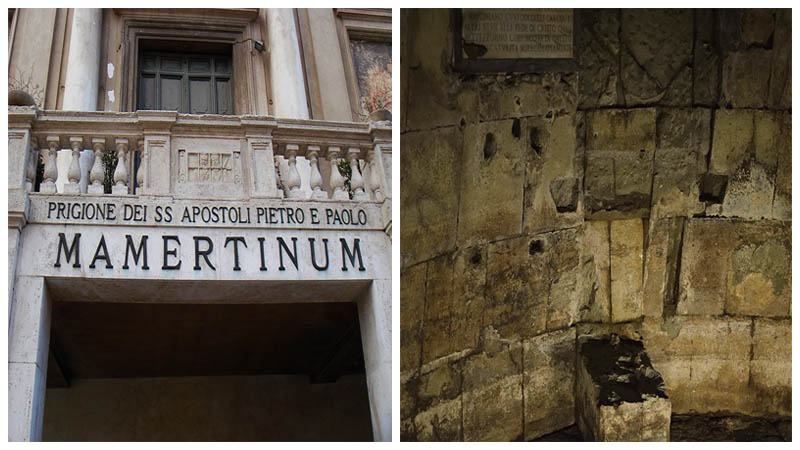Mamertine Prison stands on the side of Capitoline Hill in the heart of Ancient Rome. It overlooks the ruinous and scarred Forum Romanum where much of what defines Rome took place: public speeches, elections, and even Gladiator fights were all once common occurrences.
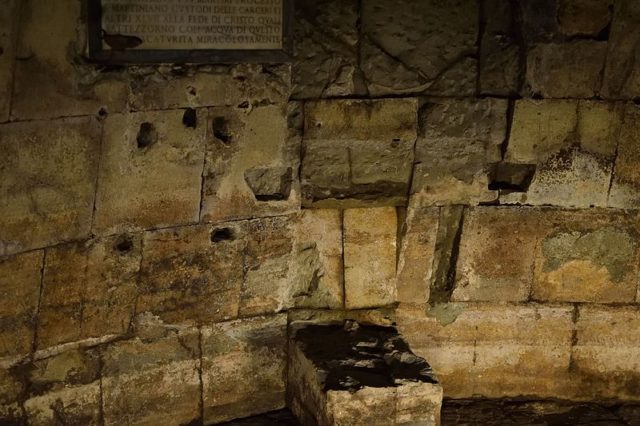
The prison once bore the name “Tullianum.” Its story is broad and includes historical figures such as King Vercingetorix – who was captured during the Siege of Alesia in the year 52 BCand was immortalized in the French comic book Asterix – and King Jugurtha, whose story is as exciting as the dungeon he was thrown into, where he died of starvation.
Given the ancient origins of the prison, numerous legends were born over the years: tales that include the biblical figures of St. Peter and St. Paul.
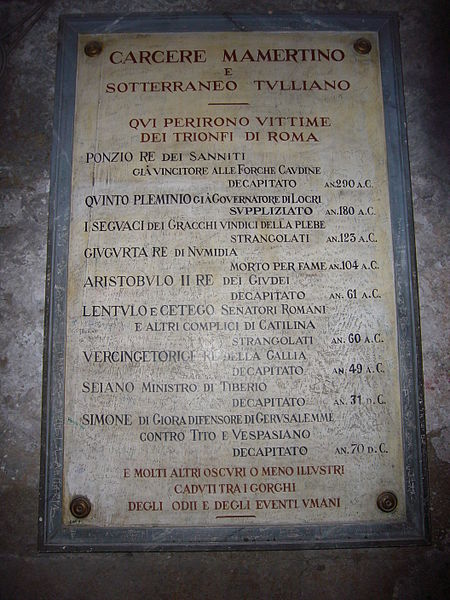
According to legend, the two Saints were held in the prison prior to being crucified. Even though the Tullianum is described as a prison, this description can be a bit misleading: Mamertine is comprised of only two dark, underground dungeons placed one on top of the other. The Saints were supposedly held in the lower cell.
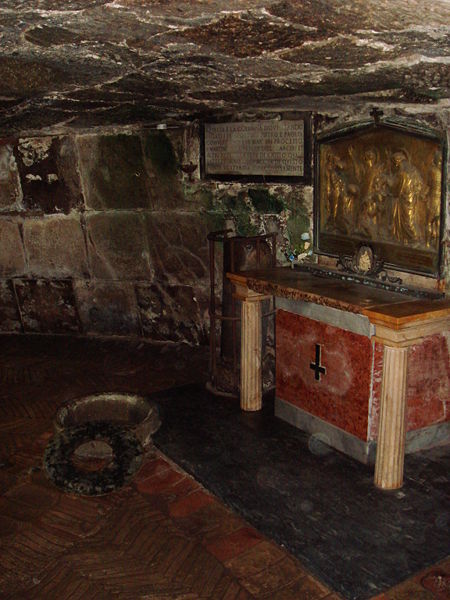
The name “Mamertine” has its origins in medieval days but is mentioned a number of times by writers and historians of old, such as Titus Livius Patavinus (often referred to as Livy). According to his History of Rome, the prison was constructed in the 7th century BC following the orders of Ancus Marcius, the fourth king of Rome.
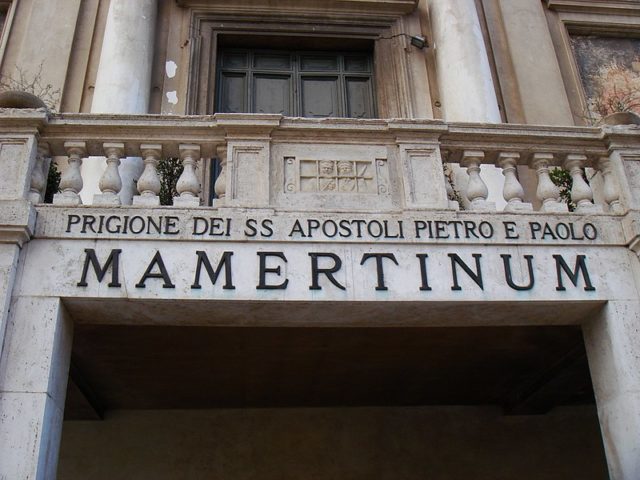
Livy wrote that it was the king’s wish for the dungeon to be dug deep underground. Whether his writings were accurate or not, it is certain that the Romans were one of the first cultures to use criminal prosecution. Rome had a number of courthouses, which were usually located close to jailhouses.
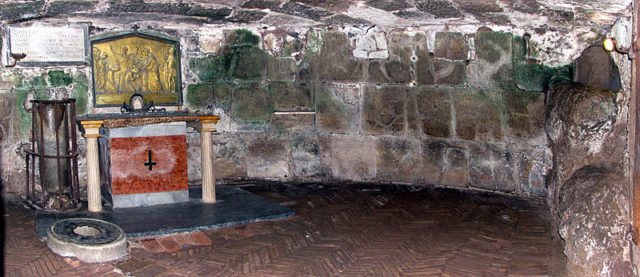
The purpose of these holding cells was to keep the prisoner for a short amount of time. No matter how short the sentence, those unluckily enough to end up in there were met by the most horrific environment. Conditions in these dungeons were closer to a sewage tank than a prison cell. Mamertine Prison was no exception. People were simply thrown into the cells and forgotten about whilst awaiting their executions; sometimes people died of starvation long before their sentences were carried out.
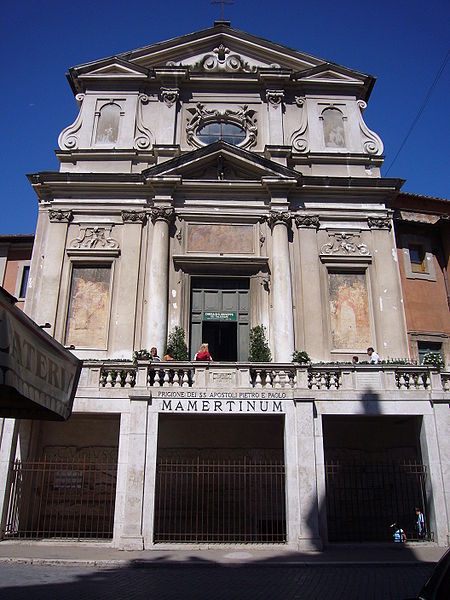
Legend has it that the Apostles St. Peter and St. Paul didn’t die in their cells but were held for a period and then taken to be crucified. St. Peter was crucified upside down on the site of the Vatican and St. Paul was taken to Three Fountains Abbey where he was beheaded. His head is said to have hit the ground three times and where it hit, fountains sprang forth.
This is how Three Fountains Abbey came to exist. Whilst in his cell, St. Peter took the opportunity to baptize the other inmates using water from a spring that he miraculously created: a spring that is active to this very day. It is noted in the Catholic Encyclopedia, however, that the spring existed long before the time of his incarceration.
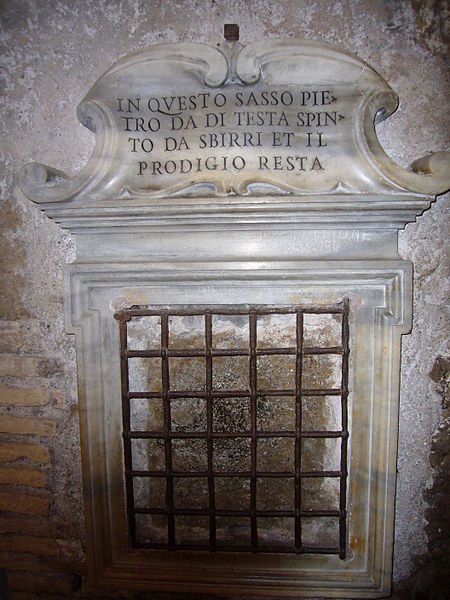
The story of St. Peter and St. Paul spread across the globe, and with time the prison became a destination for pilgrims. According to the Telegraph, “Italian archaeologists have found frescoes and other evidence which indicate that it was associated with St. Peter as early as the 7th century.”
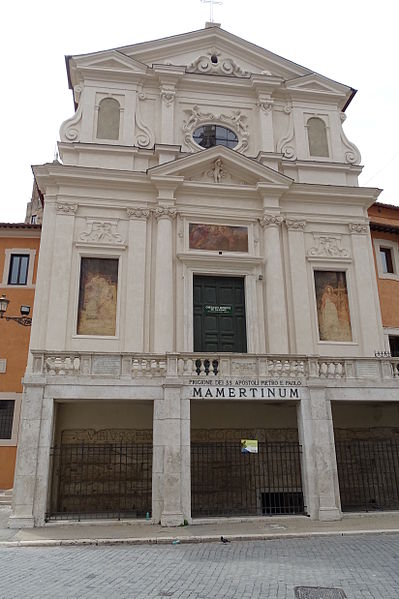
Today, the San Giuseppe dei Falegnami church stands on top of Mamertine Prison. Pilgrims and tourists come from all corners of the world to travel back in time and witness what life was like inside these claustrophobic underground cells.
For a period, the whole complex was closed for renovations. Now, the display has been enriched with audio and video elements, alongside other technology. A 3D reconstruction of the place offers an unforgettable experience for everyone who chooses to visit.
